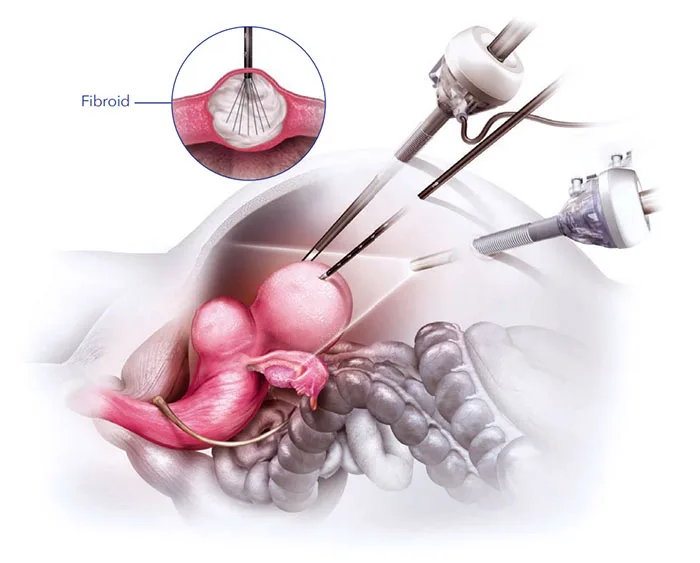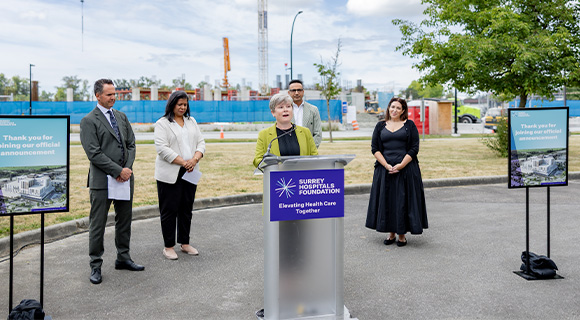It’s a shocking statistic, but upwards of 25% of women in their child-bearing years develop uterine fibroids.1 This number rises as women approach menopause. Fibroids are non-cancerous tumours that can cause years of distress and agony for women. Symptoms range from heavy bleeding, pelvic pain, bloating, incontinence, painful sex, and fatigue.2 These tumours can also affect fertility and can contribute to miscarriage, premature labour and cesarean section.
Over time, some fibroids can grow as large as a watermelon, while others remain as small as a pea. There can be just one or multiple fibroids. Studies show that most women suffer in silence for an average of 3.6 years before seeking treatment.3
When women finally seek treatment, historically, there have been few options. Treatment includes a hysterectomy, which is the removal of the entire uterus. Or, a woman could opt for a myomectomy, which leaves the uterus in the abdomen and removes only the fibroids. Both pose serious health risks, including excessive blood loss and infection.
Thanks to the support of Surrey Hospitals Foundation and generous donors, Jim Pattison Outpatient Care and Surgery Centre (JPOCSC) now offers a safer procedure called Acessa. It is helping women with fibroids enjoy pain-free lives.
What is Acessa?
Acessa is also known as Laparoscopic Radiofrequency Ablation (Lap-RFA). This ground-breaking procedure uses radiofrequency technology to heat and shrink uterine fibroids. “When we use radio frequency energy, we superheat the fibroid to about 70 C, which changes the architecture of the fibroid,” says Dr. Justin Mui, an obstetrician and gynecologist at Surrey Memorial Hospital.
The Acessa handpiece is placed directly into the fibroid and uses controlled and directed heat, an excellent feature of the technology as it doesn’t damage surrounding healthy tissue. With help from an advanced guidance and mapping system, Acessa optimizes visualization of the uterus using a laparoscopic camera and ultrasound.
“The fibroid breaks down, shrinks and becomes softer in consistency,” Mui says. This reduction in the size of the fibroid has a significant impact on eliminating pain, he says. Over time, the body slowly absorbs the fibroids.
Acessa is far less invasive, for example, than a hysterectomy, a major abdominal surgery. With Acessa, the surgeon makes three tiny incisions in the abdomen, which results in minimal discomfort and faster recovery time. This procedure is a game-changer for women. “Acessa provides another avenue for treatment that can save someone from having a more aggressive surgery,” says Mui.
Acessa spares the uterus from a hysterectomy and eases the impact of these benign tumours on their daily lives.

The New Equipment Assists with Hospital Stays
Acessa is a surgical advancement that will assist with gynecological hospital surgical and stay times. A hysterectomy can take up to four hours4; Acessa is half the time at 90 to 120 minutes.3 Women no longer require a one- to two-day hospital stay, returning home shortly after the procedure. Most women return to work in a week. Whereas a hysterectomy can take between six to eight weeks to recover.
Operating rooms and hospital beds are at a premium in Surrey health centres as the population grows. Complex health issues are also more commonplace, so more healthcare innovation is needed. “Benefits for the patient include a shorter recovery, less pain, and no overnight stay in hospital. Most people are back on their feet doing what they normally do within about 48 hours,” says Mui.
Acessa is now available in the Fraser Health Region
Dr. Mui and his colleague, Dr. Claudine Storness-Bliss, travelled to California to receive training from Dr. Bruce Lee, the inventor of Acessa, as few surgeons in Canada perform the procedure.
St. Paul’s Hospital in Vancouver has previously been the only place in British Columbia where women could receive Acessa treatment. Now that it is available in Surrey through day surgery at JPOCSC, many women’s quality of life will improve dramatically. Mui says that he and Storness-Bliss — the only two surgeons to offer Acessa to the Fraser Health community — will be able to see women from all over the region with a gynecologist referral.
Mui says that although Acessa is excellent news for many women, the treatment is not universal. “It’s not for everyone, but it does offer another way for effective treatment for fibroids in the right patient.”
Women living with uterine fibroids now have hope and a new treatment option called Acessa. With your support, the Foundation can continue to bring safe and innovative healthcare into the community.
 About the Author
About the Author
This article is a guest post by Denise Moulton, a registered nurse that works at the Jim Pattison Outpatient Care and Surgery Centre in Surrey. Denise is passionate about writing. Her background in journalism allows her to create compelling and informative content that resonates with anyone interested in healthcare. In her free time, Denise can be found exploring British Columbia’s hiking trails.
Sources:
1. https://www.brighamandwomens.org/obgyn/minimally-invasive-gynecologic-surgery/uterine-fibroids
2. https://www.hopkinsmedicine.org/health/conditions-and-diseases/uterine-fibroids#:~:text=Emergency%20Fibroid%20Symptoms&text=You%20should%20seek%20emergency%20care
3. https://gynsurgicalsolutions.com/wp-content/uploads/2022/05/PP-02217-Rev-002-Flipbook-v3iPDF.pdf
4. https://www.hopkinsmedicine.org/health/treatment-tests-and-therapies/hysterectomy


